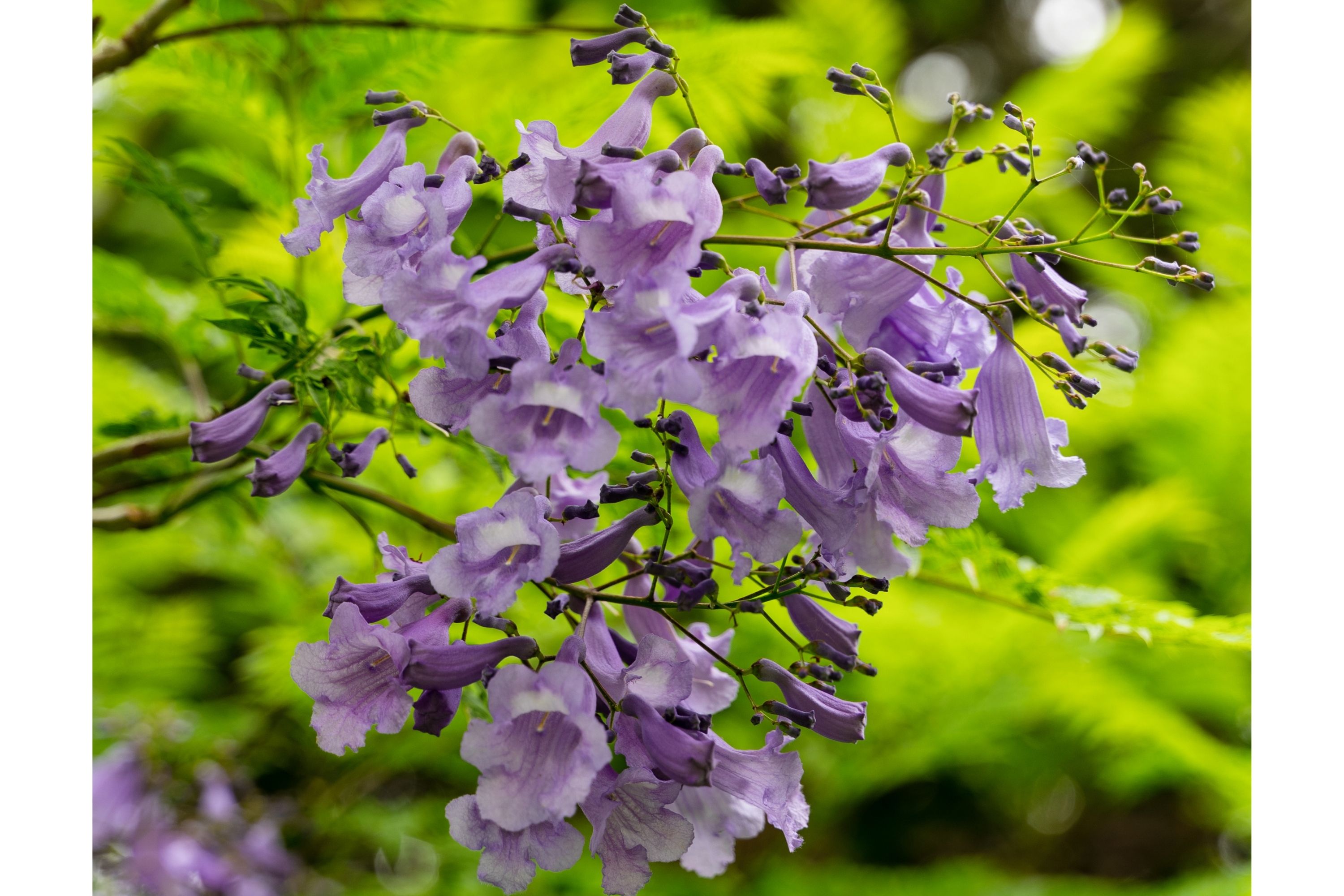Jacaranda copaia
(Jacaranda copaia)

Description
Jacaranda copaia is a flowering pioneer tree belonging to the genus Jacaranda. It is native to Northern and Western parts of South America. The tree is evergreen or semi-deciduous and produces blue flowers from August to November. Young trees have a long trunk with no branches. Large leaves grow directly from the top of the trunk giving them an appearance similar to tree ferns, particularly immature Schizolobium parahyba. When mature, J. copaia grows to 30 to 35 metres (98 to 115 ft) and is normally branch free for more than 50% of its height. The top consists of a "vase-shaped crown" of branches and leaves. The trunk is approximately 75 centimetres (30 in) in diameter and has rough, dark gray bark. Jacaranda copaia is native Northern as well as Western South America. It is common in the Brazilian Amazon where, as a pioneer species, it colonizes gaps in the forest and areas that have been cleared. During the dry season, the leafy branches are burned as a way to repel biting insects. The bark has been used as a laxative and to treat dysentery and syphilis. The leaves have been used to treat leishmaniasis, fevers, yaws and ringworm. The Guyana Patamona use the juice of young leaves to treat persistent sores. The native people in Kurupukari, Guyana also use parts of the tree for treating ulcers and sores. The species are shrubs to large trees ranging in size from 20 to 30 m (66 to 98 ft) tall. The leaves are bipinnate in most species, pinnate or simple in a few species. The flowers are produced in conspicuous large panicles, each flower with a five-lobed blue to purple-blue corolla; a few species have white flowers. The fruit is an oblong to oval flattened capsule containing numerous slender seeds. The genus differs from other genera in the Bignoniaceae in having a staminode that is longer than the stamens, tricolpate pollen, and a chromosome number of 18. A cosmopolitan plant, Jacaranda mimosifolia is quite common in Paraguay, Uruguay, Southern California, Florida, Mexico, Colombia, Saudi Arabia, Argentina, Brazil, South Africa, Botswana, Zimbabwe, Australia, New Zealand, Israel, Italy, Portugal, Spain (particularly in Málaga) and Zambia and has been introduced to most tropical and subtropical regions to the extent that it has entered popular culture. It has been planted widely in Asia, with trees visible in many parts of Nepal, Pakistan and India.
Taxonomic tree:







